It’s probably fair to say the awkwardly named Volkswagen New Beetle, launched in 1997, was not an outstanding car, even if being based on the Mk4 Golf means it was never actually a bad one either.
A proportion of you will baulk at the idea of it being a future classic, regardless of its objective capabilities. Revivals of much-loved names tend to get a short shrift with enthusiasts, particularly if they seem a bit cynical, with an uncomfortable whiff of cashing-in hanging in the air.

New Beetle was certainly that. It was absolutely targeted at those who fondly remembered the 1960s and 1970s. But it was far from the only one, so not an accusation that can be levelled at Volkswagen alone. The Rover Group for one, for whom the original Mini was still trudging on (and whose ’90s brochures went barely a paragraph without mentioning Carnaby Street, Twiggy or miniskirts), and was preparing the P4-inspired 75 in the background.
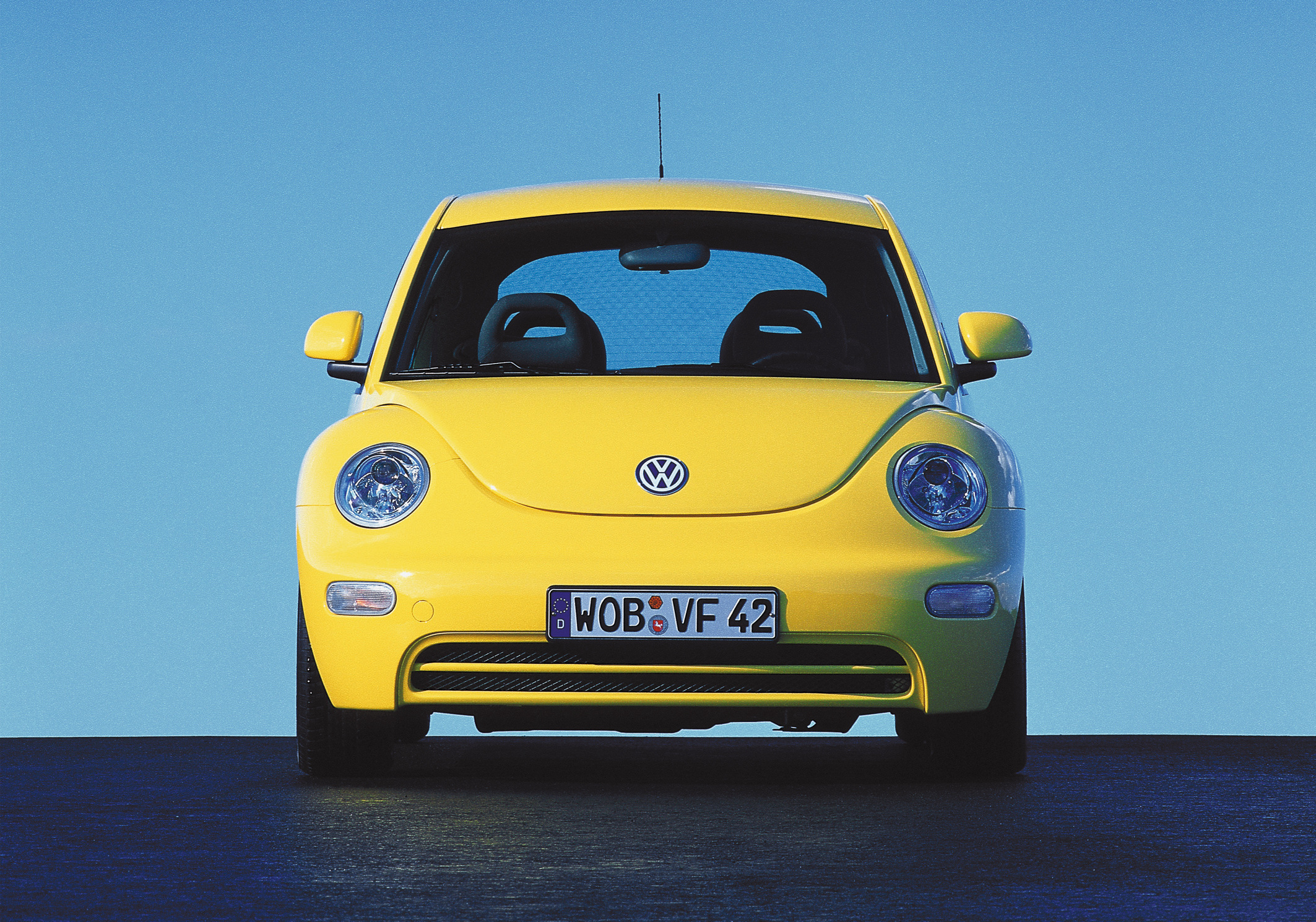
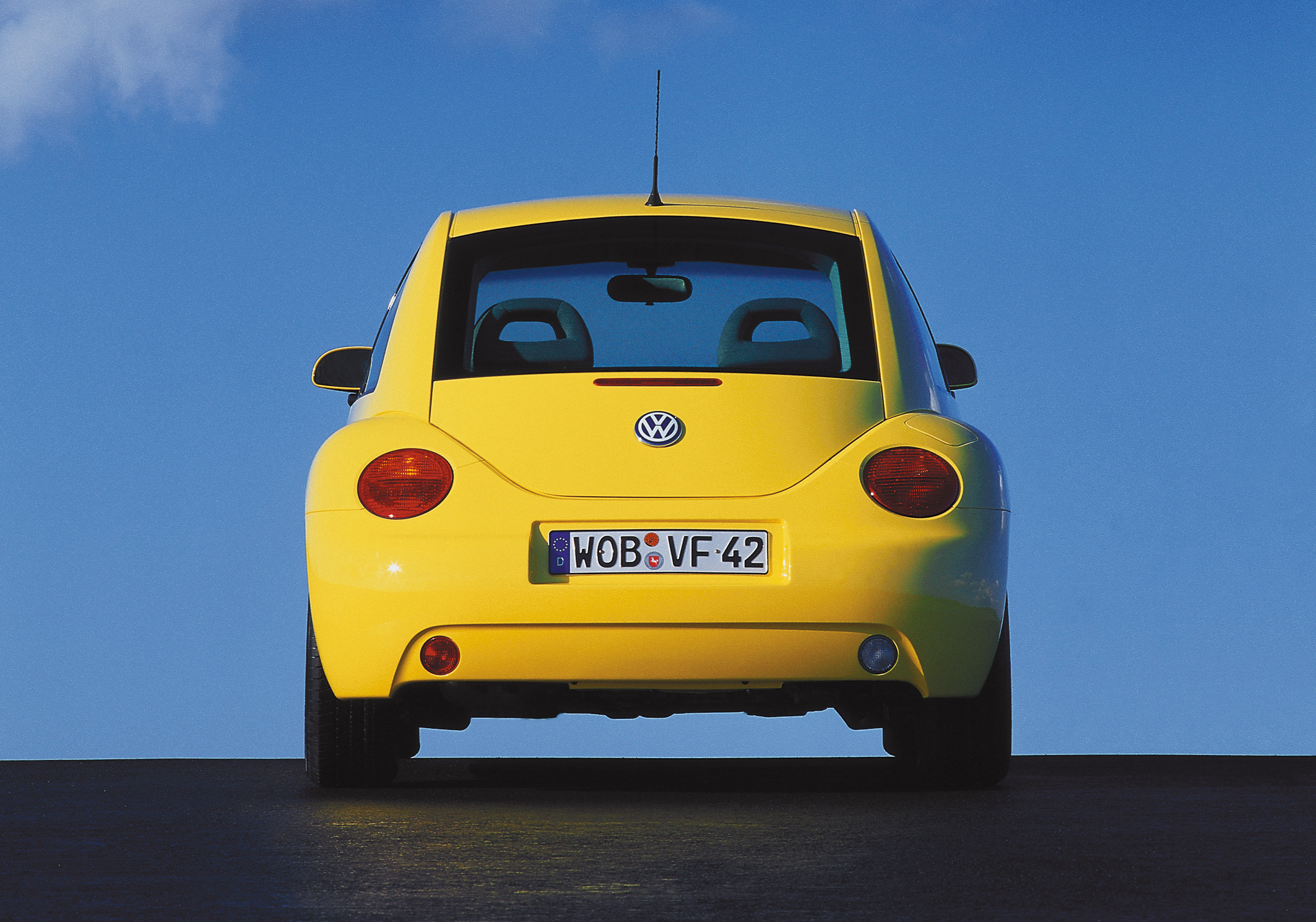
The press meanwhile were convinced a “new 2CV” was on the way, and Chrysler was busy launching the PT Cruiser – pseudo-‘40s or ‘50s really, but very much bait for Baby Boomers. Remember too this was the era of the two-seat roadster revival kicked off by Mazda: cars which were echoing the first roadster boom of the 1950s and 1960s.
The New Beetle, then, fit right in. It was a bullseye for customers whose kids had flown the nest, and could now settle down with the warm, fuzzy familiarity of a retro design, trading boring Golf-style practicality for old-car styling without old-car quirks. And, with the 1960s heavy in contemporary pop culture (Britpop was a revival of the mop-haired bands of the ‘60s, ravers were the new stoners, tie-dye was making a weird comeback) even younger buyers would “get it”.
The advertisements, designed by long-standing VW ad agency DDB, played heavily on the retro theme. “Less flower. More power” read one; “The engine’s in the front, but it’s heart’s in the same place” said another.
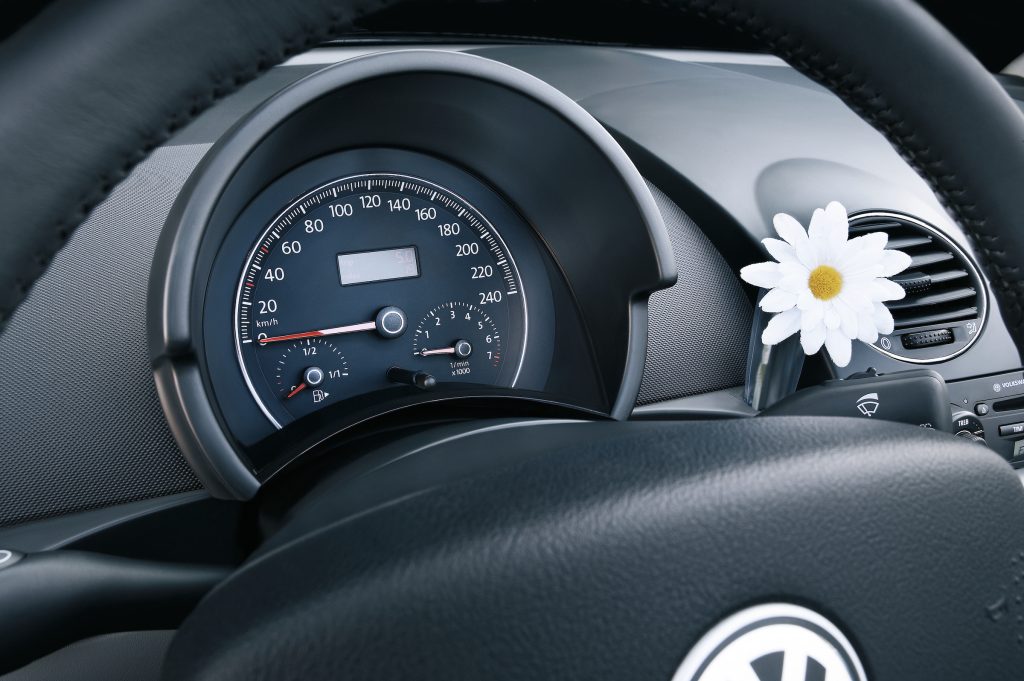
The first tagline was only half true, of course: famously, the New Beetle was, in a rather self-aware way, fitted with a small vase on the dashboard into which you could plonk a large, petalled motif of the late 1960s.
One thing you might have forgotten is that it was actually very well received by the press. Most noted it was not the quickest car, with its old-tech 2-litre eight-valve from the Mk3 Golf, and the available 1.9 TDI was in a relatively low state of tune too (though some noted its gravelly note was most similar to a classic Beetle’s flat four).
Most could tell it wasn’t really set up as a handler either, noted the appalling rear headroom from that sloping window, and a few had reservations over the plastic football field VW called a dashboard – which made the front corners of the car basically invisible and every attempt at parking a test of nerves.
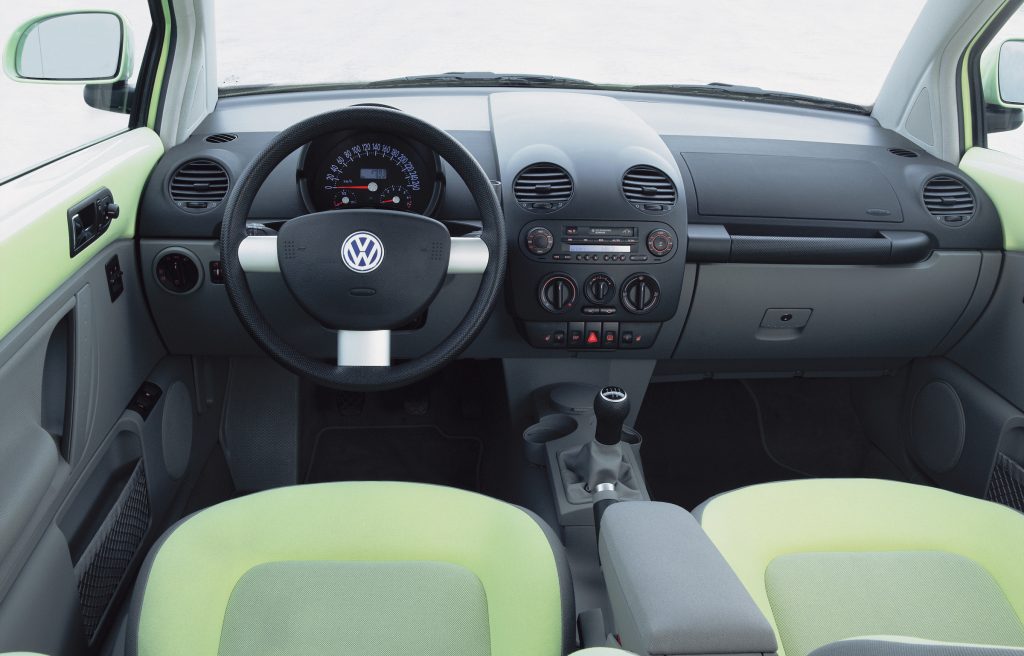
But it’s not like the original Beetle was perfect, and the New Beetle was still a tidy drive, particularly for those who still had memories of how badly a ropey original could get down the road. Reviewers loved the materials and details (this was peak ‘blue backlit dials’ era for VW) and enjoyed the overwhelmingly positive reaction from bystanders even more. Jeremy Clarkson, of all people, even went as far as saying the first Turbo model in the UK would be his (though there’s no record of whether he kept that promise).
Age has now wearied the New Beetle just as it would have done 25-year old examples of the original back in 1997, and today the model hovers in that uncomfortable territory between cheap banger and emerging classic.
But the original did that, too. People knew it was iconic even at its lowest ebb, but just like Minis and other budget cars, the classic Beetle spent an awful long time as a disposable product, cheap, rotting away, and terrifying penny-pinching owners with handling quirks unique to its 1940s origins. The New Beetle at least kept you out of the hedges.
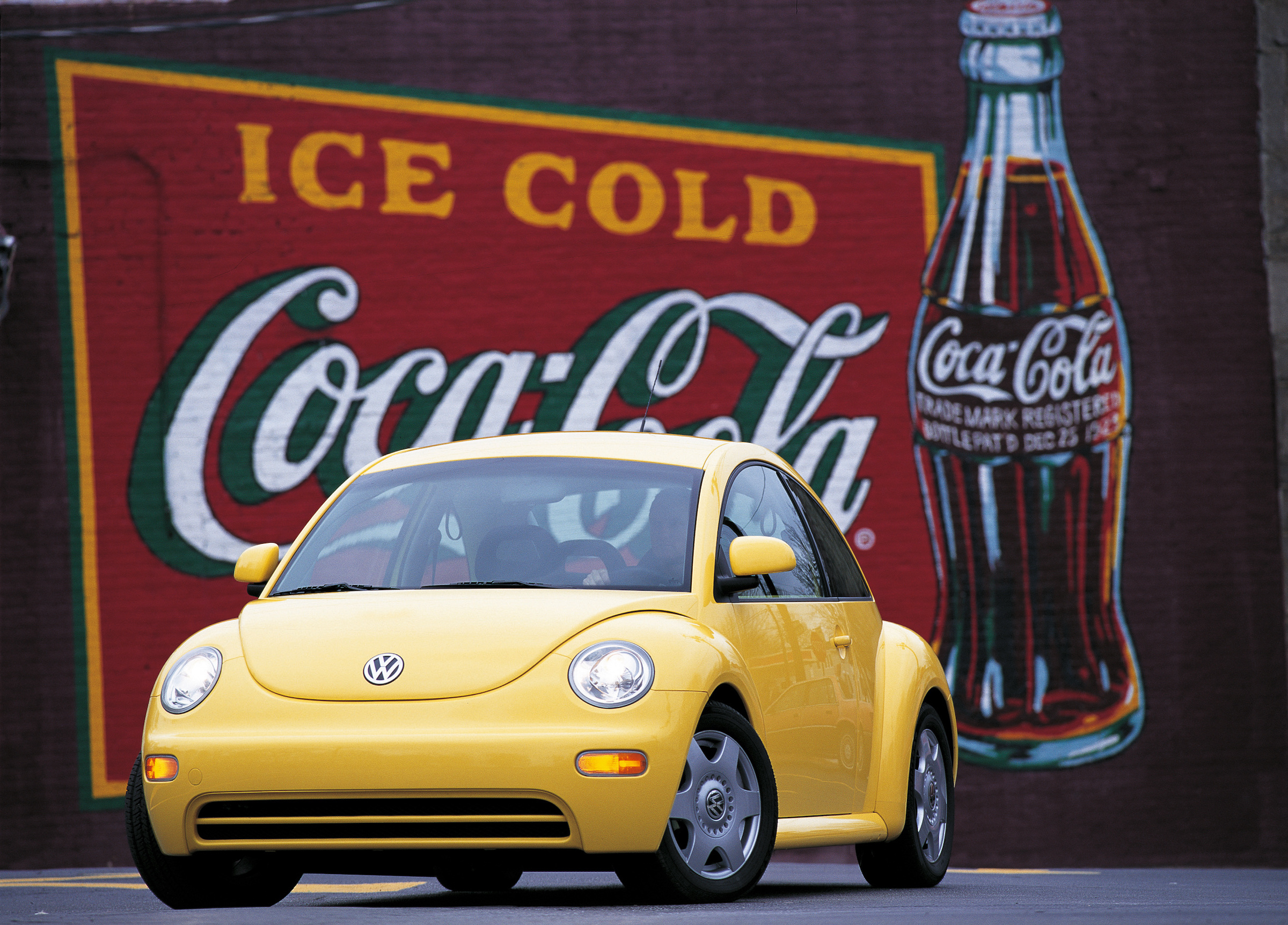
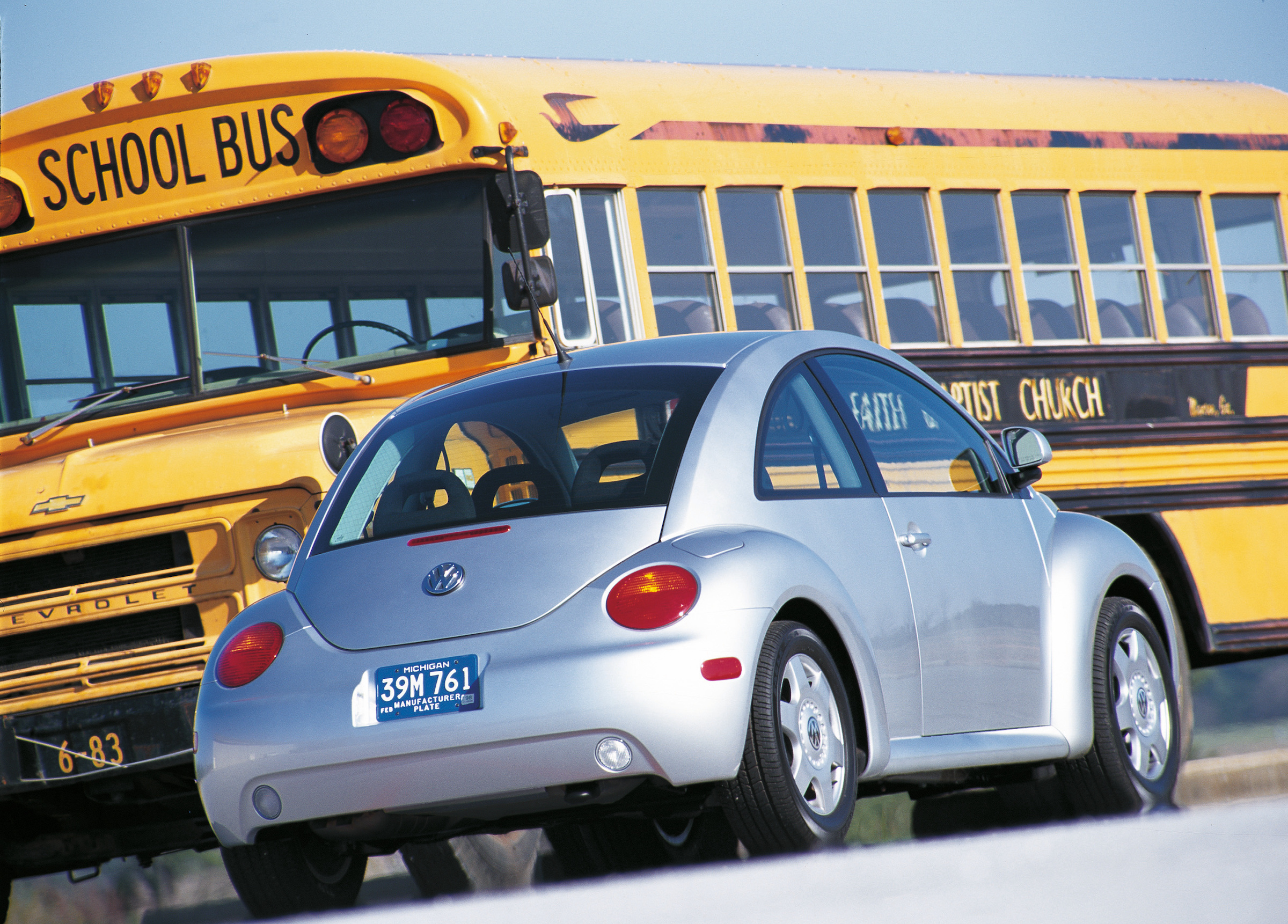
The important thing is that those that survived now have a following. And that, more than anything else, is why I think the New Beetle will be viewed with increasing fondness. It didn’t become the icon of a social movement like its predecessor, but take a look at how many younger buyers have adopted the model today, and are modifying it just like its predecessor.
In the last few weeks alone I’ve seen a convertible custom-painted in a 1950s black and cream (complete with polished chrome hubcaps), and another that looked like it had escaped the set of Mad Max, with external fuel cans and grilles over the lights. Search online and you’ll find highly-modified Turbos, V5s on air ride, and even track-modified cars. Highly personalised, plentiful parts, a thriving community… any of this sound familiar?
In the end, it barely even matters that Volkswagen called it a Beetle (with or without the ‘New’ prefix). The important bit is that owners loved them when new, bought the thing in droves, and that a quarter-century down the line, a new generation of owners is emerging ready to give the New Beetle a whole new lease of life. If that’s not the making of a future classic, I’m not sure what is.
Read more
Future Classic: Volkswagen Lupo GTI
Freeze Frame: Herbie spawns a thousand imitators
Buying Guide: Volkswagen Beetle (1938-2003)














I can’t see it myself. It’s the answer to a question that nobody had asked. The new Mini though no longer actually that small, built on the strengths of the original – brilliant handling, and an actual character. And it was developed as a unique model. The new Beetle is just a mediocre Golf in drag – it doesn’t do anything very well and shares none of the engineering ethos of the original.
The ‘New Beetle’ is marmite. You either love it or hate it.
Most have never tried one and resort to faux hate (mainly middle aged men protecting their fragile egos).
Sure the NB had cutesy styling and yes, that appealed to women. But there is a darker side to the ‘golf in drag’.
When the Turbo model was introduced marketing was a bit, well – lame. It extolled the additional power but the car had no real external or internal differences to set it apart from every other Beetle. Aside from a slightly lower ride height and a speed activated spoiler some never even realised was there the ‘performance’ intention was invisible.
A shame because the 150bhp 4 cylinder has great tuning potential. VW themselves upgraded certain turbo models in the US (Turbo ‘S’) with a bigger turbo, improved styling and interior taking it to 180bhp. But the potential for much more was there. The 225bhp BAM engine from the Audi TT is a direct swap.
Also VW offered the Beetle with the 2.3l V5/VR5 5 cylinder engine. In early 10v form these silky smooth units produced 150bhp. Later 20v models pushed out 170bhp. More of a grown ups option the sound and lazy cruising ability of the V5 coupled with the later styling and improved interior of the V5 Sport model (a la Turbo S).The common assumption was that VW didn’t want the Beetle taking market share from the Golf GTI. I’m not sure that adds up to great business strategy. Beetle owners are very different to Golf owners.
Factor in the Beetle RSi and Millennium Cup Editions and all the components were there to have a sports Beetle in the main production offering. Personally I think VW should always have offered a GTi Beetle or Beetle R model.
A European version of the Millennium Cup, with a tuned BAM engine and the option of 2wd/4Motion would have filled a hole in the Beetle appetite that was never satisfied.
Look to today, at the number of modified and tuned Turbo models out there (some pushing unholy power for a vehicle that shape) and it’s obvious the market existed. In the same way VW created an RSi Cabrio and the Dune 4Motion Baja concept. Both were missed opportunities for what amounted to parts bin models.
The success of the BMW Mini was originally, like the Beetle – it’s retro throwback character. BMW saw that that charm would only carry it so far and opted to bring back other models, bodystyles and continually evolve the equipment. VW chose to do one moderate facelift, keep the equipment list tighter than a Yorkshiremans wallet grip and ignore the potential of other – more outgoing body options.
Sadly they continued to do this with the 2010 Beetle. No credible performance model, no fun 4×4 option and no 4dr. Model suicide.
I’ve owned and driven over 5 different Beetles. A 73 super was my first car in the 90s. Never lost the love
Had a 2002 and yeah I didn’t like it much. The dash was/is atrocious. A 2014 which was fun. A 2019 Final Edition is my current car. I love it so much. Just bought another for my kid to use and take miles off the final edition use. The 2012 is the most Nostalgic of all the New Beetles and A5s I’ve driven. It’s a ton of fun. With some of the throwback and Fender models also being close to that for me. My kid is 17 and there is definitely a new era of obsessed kiddos out there. More in her parking lot than mine in the 90s. Im keeping both in as good as shape as possible because I do believe they will absolutely be a classic….again.
Great article! I’ve been slated by trolls for being optimistic about these Beetles. Having worked for an aircooled VW magazine and having owned plenty of pusher bugs naturally led to owning and trading 20+ New Beetles over the years, it’s fair to say they’ve sold well and always achieved a decent price, the market seems strong.